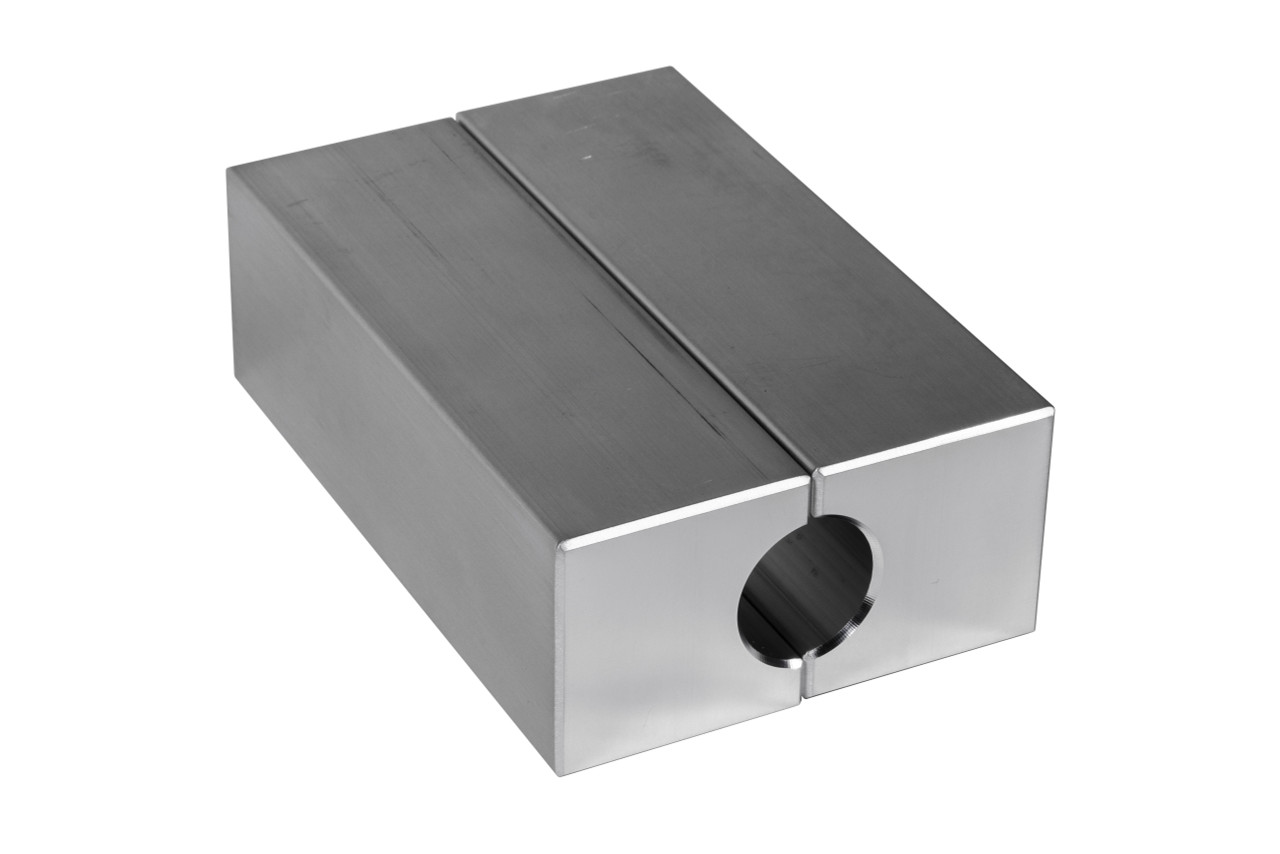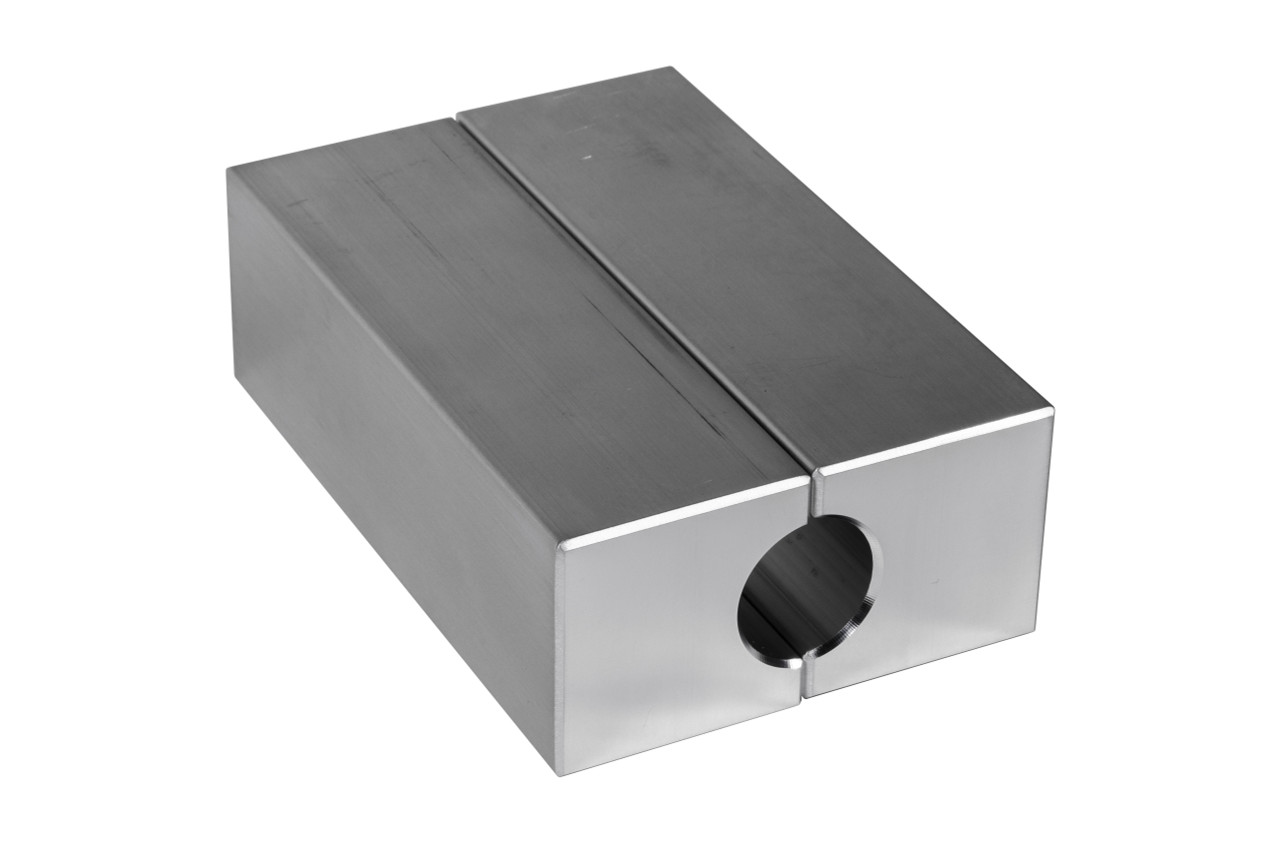Product Description
Cross Coupling cable protectors are well-engineered to safely convey and efficiently secure virtually any configuration of control lines or cables into or out of well-bores. More then 1000 types of Cross Coupling cable protectors were custom made and developed for a wide range of tubing(coupling) type & sizes, cable types & sizes. Material and design will be custom made CZPT the projects’ requirements.
APPLICATIONS
• ESP cable
• Subsurface safety valves control line
• Chemical injection line
• Permanent Gauges
• Intelligent Wells
• Fiber Optic
• Coiled tubing
DESIGN FEATURES and OUR ADVANTAGES
• Streamlined design and beautiful structure
• Tubing sizes from 2 3/8″ O.D. to 7″ O.D.
• Fast action for design and short lead time
• Separate channels for flat, round, or square cables and control lines in 1 cross coupling protector
• Material of Cast steel, Stainless Steel, Duplex Stainless Steel are available
• One piece assembly with no loose fittings.
• Galvanized coating or Electrophoretic paint for maximum rust protection
• Custom-made CZPT request
We have 10 years exeperience in the manufacturing of cross coupling protector/downhole cable protector/control line protector.
1)Up-to-date steamlined designs for the cross coupling protector make the installation in high efficiency and low costs.
2)Our own foundry and machining shop equiped with automatic shell making line and manual line and can work the high volume order and small order in the same time,and indure fast delinery in stable quality .
3)A stable and fluent processure and full set of quality standars were established during our 10 years’ production of cable protectors.
4)Heat numbers will be made on body of the protectors to track the batch quality well ;pre-pouting material tests and post-pouring material tests and post-pouring material tests will be done to insure the proper material,and test bars will be done each production for customers’ tests.
5)We have production capacity of 25000 sets per month.
6)All kinds of testing can be done in house,such as MPI, drift test,slipage test,axial load test ,rotational load test as well as the crush load test.
7)Tech people in full energy are alwarys prepared well to provide high quality service to the customers.
We are always ready to meet with the customers’ need,and save the costs and time.
| Certification: | ISO 9001:2000 |
|---|---|
| Surface Treatment: | Without Processing |
| Material: | Cast Steel |
| Transport Package: | Plywood Box |
| Specification: | ASTM, AISI, SAE, UNS, NF, DIN-EN, JIS, KS, SS, BS |
| Trademark: | QS machinery |
| Samples: |
US$ 8/Piece
1 Piece(Min.Order) | |
|---|
| Customization: |
Available
| Customized Request |
|---|
Are there educational resources on troubleshooting common issues with shaft clamps?
Yes, there are educational resources available to help troubleshoot common issues with shaft clamps. Here’s a detailed explanation:
When encountering problems with shaft clamps, it can be helpful to refer to educational resources that provide guidance on troubleshooting and resolving common issues. These resources can offer valuable insights into identifying and addressing problems related to shaft clamps. Here are some examples of educational resources:
1. Manufacturer’s Documentation:
The manufacturer of the shaft clamp may provide detailed documentation that includes troubleshooting information. This documentation can include user manuals, technical guides, or FAQs that address common issues and their resolutions for the specific clamp model. It’s highly recommended to consult the manufacturer’s documentation as a primary resource for troubleshooting.
2. Online Forums and Communities:
Online forums and communities focused on engineering, machinery, or specific industries can be a valuable source of information. These platforms often have discussions and threads dedicated to troubleshooting issues related to shaft clamps. Participating in these forums allows you to interact with experienced professionals, share problems, and seek advice on resolving specific issues.
3. Industry Publications and Magazines:
Industry publications and magazines related to mechanical engineering, machinery, or specific sectors often feature articles, case studies, or technical guides that address common issues encountered with shaft clamps. These resources provide insights into real-world applications and troubleshooting approaches.
4. Professional Associations and Organizations:
Professional associations and organizations related to mechanical engineering and specific industries may offer educational resources on troubleshooting common issues. They may provide technical papers, guidelines, or training materials that cover the topic of shaft clamp troubleshooting. These resources are often developed by experts in the field and can provide valuable insights.
5. Webinars and Online Courses:
Webinars and online courses focused on mechanical engineering or machinery maintenance may include modules or sessions dedicated to troubleshooting shaft clamps. These educational platforms offer interactive learning experiences and provide guidance on identifying, diagnosing, and resolving common issues related to shaft clamps.
When utilizing these educational resources, it’s important to critically evaluate the information and ensure that it aligns with the specific type and model of the shaft clamp you are troubleshooting. Every shaft clamp design may have unique characteristics and considerations. In complex or critical situations, it’s advisable to consult with industry experts or seek professional assistance to ensure accurate troubleshooting and resolution.
By leveraging these educational resources, you can enhance your knowledge and problem-solving skills, enabling you to effectively troubleshoot common issues with shaft clamps and ensure their optimal performance in machinery.
Can I find information on the materials used in manufacturing shaft clamps?
Yes, you can find information on the materials used in manufacturing shaft clamps. The material selection for shaft clamps is crucial as it directly affects their performance, durability, and suitability for specific applications. Manufacturers typically provide information about the materials used in their shaft clamps through various channels. Here are some ways to access such information:
- Manufacturer Websites: Visit the websites of shaft clamp manufacturers. They often provide detailed product specifications and technical information, including the materials used in their clamps. Look for sections like “Product Specifications,” “Material Information,” or “Technical Data Sheets.” These resources will provide insights into the specific materials employed and may include details about their properties, such as strength, corrosion resistance, or temperature tolerance.
- Product Catalogs and Brochures: Many manufacturers distribute product catalogs and brochures that highlight their range of shaft clamps. These materials often contain information about the materials used in the construction of the clamps. You can request catalogs from manufacturers directly or explore their digital versions available on their websites. Catalogs typically provide an overview of the different product lines, along with material specifications.
- Technical Support and Customer Service: Reach out to the technical support or customer service departments of shaft clamp manufacturers. They can provide detailed information about the materials used in their products and address any specific questions or concerns you may have. Manufacturers’ representatives are often knowledgeable about their product materials and can guide you in selecting the right shaft clamps based on your application requirements.
- Industry Publications and Resources: Explore industry publications, journals, or technical resources related to mechanical engineering, industrial applications, or fastening technologies. These sources may include articles or studies that discuss different types of shaft clamps and the materials commonly used in their manufacturing. They can provide valuable insights into the selection and properties of materials for shaft clamps.
- Online Forums and Communities: Engage with online forums, communities, or discussion groups focused on mechanical engineering or industrial applications. These platforms often have professionals, enthusiasts, or industry experts who can share their knowledge and experiences regarding the materials used in shaft clamps. Participating in discussions or posting specific queries can help you gather information and recommendations from a diverse range of perspectives.
When researching the materials used in shaft clamps, it’s important to consider factors such as the application requirements, environmental conditions, and compatibility with other components in your assembly. Understanding the material properties will help you make informed decisions and select shaft clamps that are best suited for your specific needs.
What are the advantages of using shaft clamps in mechanical assemblies?
Using shaft clamps in mechanical assemblies offers several advantages that contribute to the overall performance, efficiency, and reliability of the system. Here are some key advantages of using shaft clamps:
- Secure and Reliable Connection: Shaft clamps provide a secure and reliable connection between the shaft and other components in a mechanical assembly. They help prevent unintentional movement or slippage of the shaft, ensuring that the components remain properly aligned and engaged.
- Easy Installation and Adjustment: Shaft clamps are typically designed for easy installation and adjustment. They often feature user-friendly mechanisms such as screws, levers, or cams that allow for quick and precise tightening or loosening of the clamp. This facilitates efficient assembly and adjustment processes.
- Versatility: Shaft clamps are available in various sizes and designs, making them suitable for a wide range of shaft diameters and configurations. They can accommodate different types of shafts, including round, square, or hexagonal shapes. This versatility allows for flexibility in assembly designs and component selection.
- Component Protection: By securely clamping the shaft, these clamps help protect the connected components from excessive movement or vibration. They minimize the risk of damage or wear on the shaft and other components, leading to extended component lifespan and improved overall system durability.
- Adjustability for Alignment: Shaft clamps with adjustable features allow for precise alignment of components. They enable fine-tuning of the relative positions of gears, pulleys, couplings, or other elements connected to the shaft. This helps optimize the performance and efficiency of the mechanical assembly.
- Quick and Easy Maintenance: Shaft clamps simplify maintenance tasks by providing convenient access to the shaft and connected components. When maintenance or repairs are required, the clamps can be easily loosened, allowing for swift disassembly and reassembly without the need for complex tools or extensive downtime.
- Cost-Effectiveness: Shaft clamps are generally cost-effective solutions for securing shafts in mechanical assemblies. They are relatively affordable compared to alternative methods such as rigid couplings or custom-designed connections. Additionally, their ease of installation and adjustment can save time and labor costs during assembly and maintenance processes.
- Compatibility: Shaft clamps can be used with a wide range of materials, including metal, plastic, or composite shafts. This allows for compatibility with different types of shafts and facilitates integration into diverse mechanical systems.
Overall, the use of shaft clamps in mechanical assemblies provides a reliable, versatile, and cost-effective solution for securing shafts and ensuring proper functioning of connected components. Their ease of installation, adjustment, and maintenance make them valuable components in a wide range of applications across various industries.
editor by CX 2023-11-29




